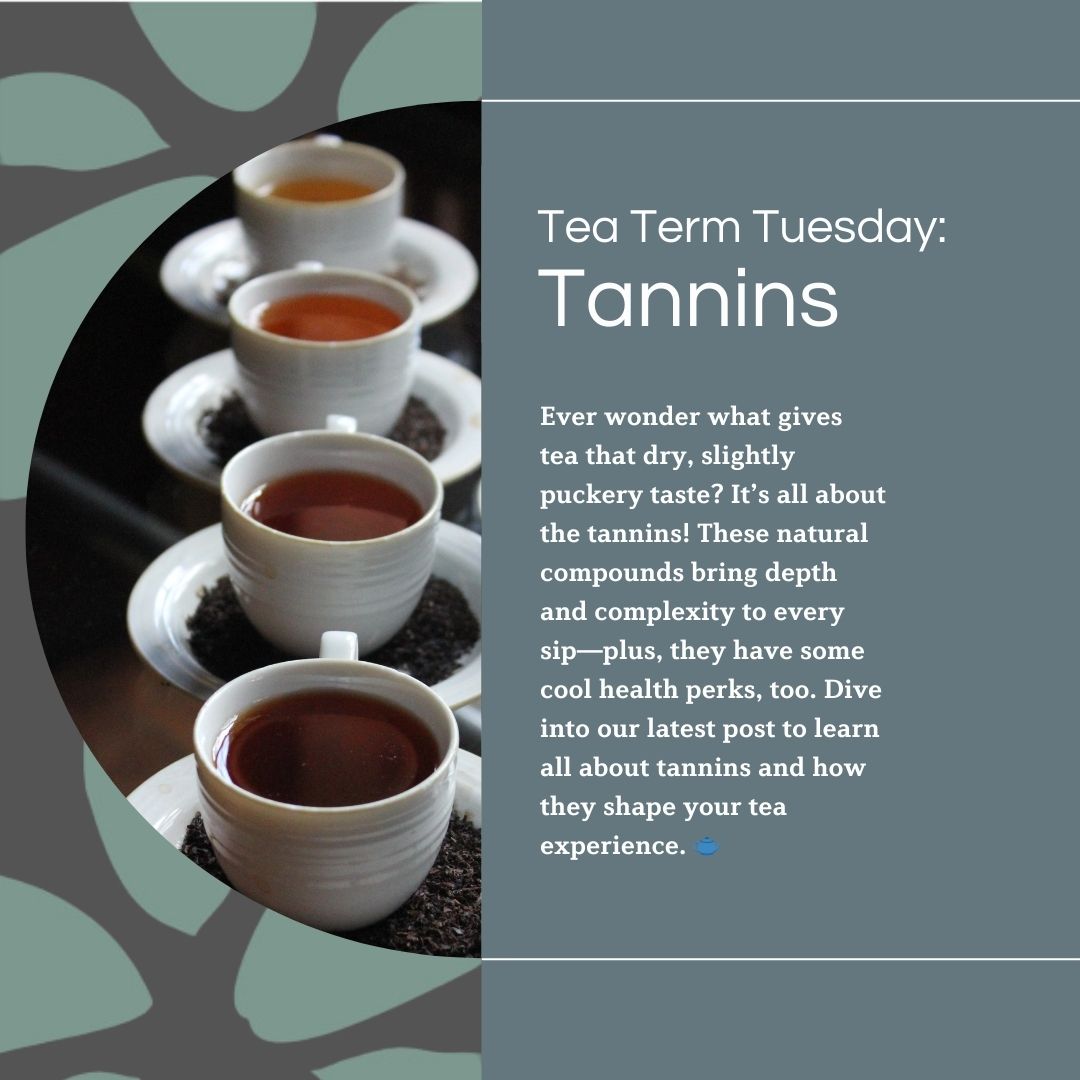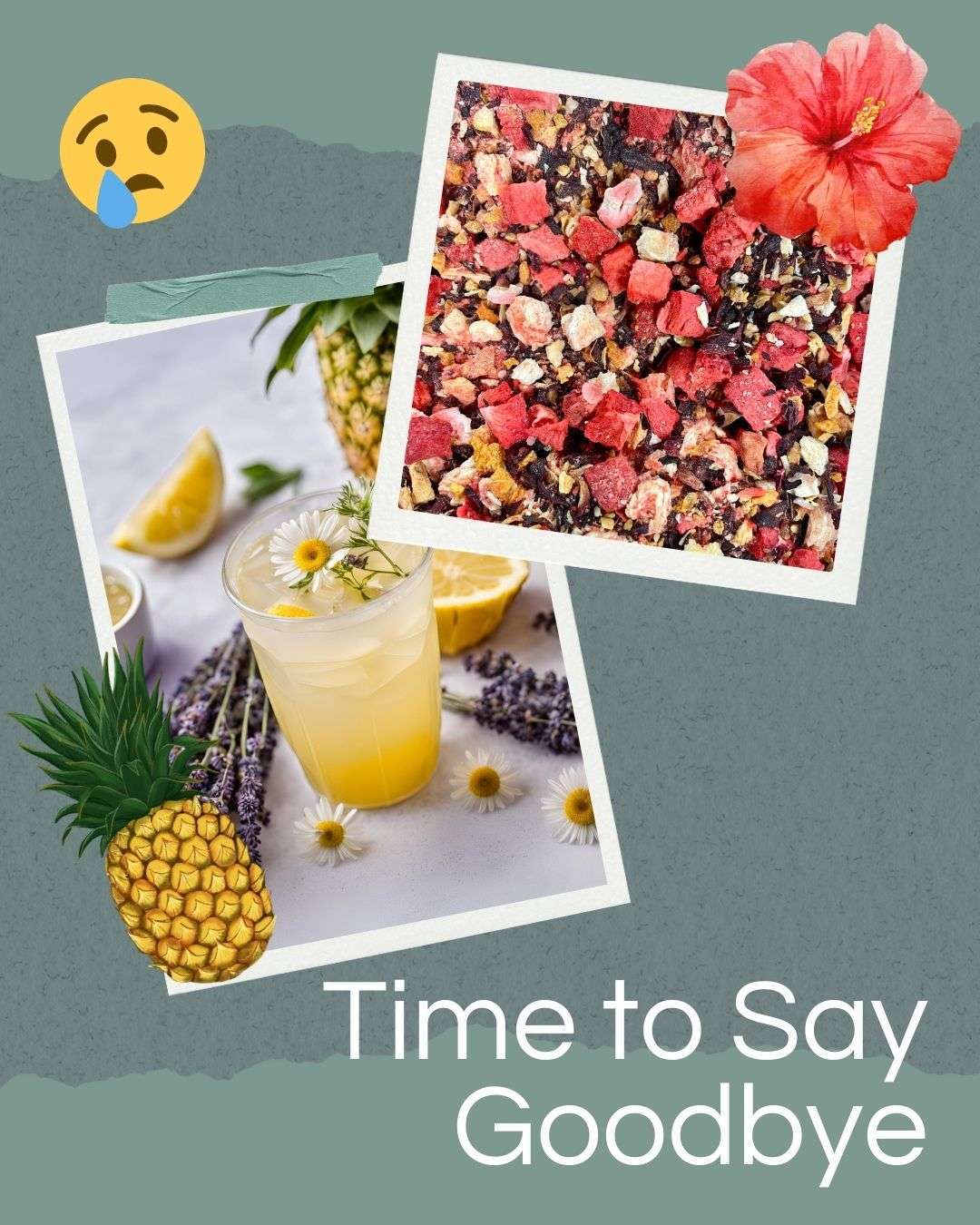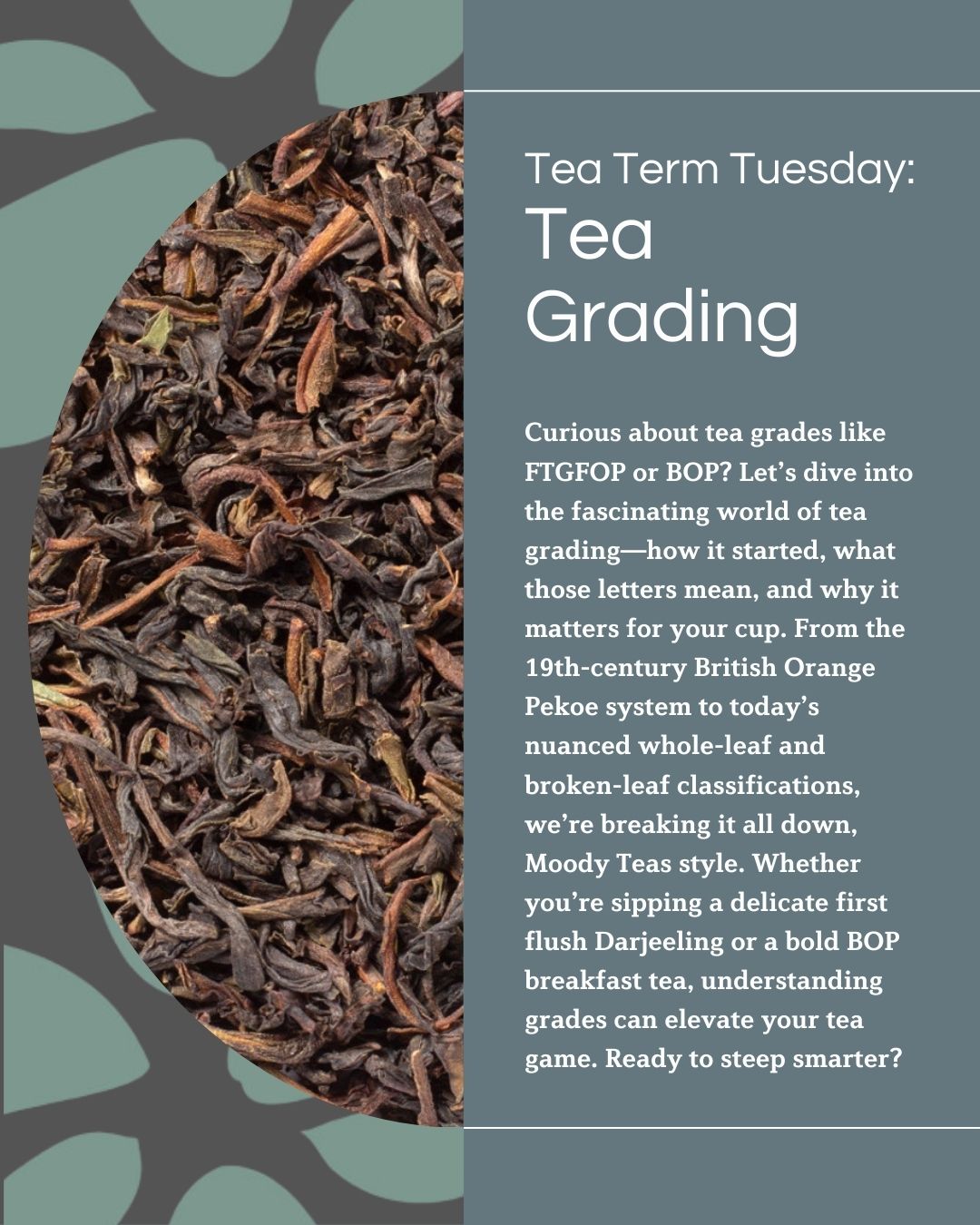Welcome to the first installment of our new series, Tea Term Tuesdays! Each Tuesday, we’ll dive into a unique tea-related term to help you build a deeper understanding of what’s in your cup. Whether you’re a seasoned tea lover or just starting to explore, Tea Term Tuesdays will give you a fun and informative peek into the world of tea. Today, we’re starting with one of the most fascinating (and sometimes misunderstood) components of tea: tannins! Let’s unpack what they are, what they bring to your brew, and why they matter.
Tannins in Tea: The Real Deal Behind That Dry, Astringent Flavor
Ever taken a sip of tea that left your mouth feeling dry or a bit puckered? That’s tannins at work! Tannins are fascinating compounds found in many plants—like tea, wine, and even chocolate. They add layers of flavor to tea and can even bring some health benefits. Let’s dive into what tannins are, what they do, and why they matter in your cup of tea!
So, What Exactly Are Tannins?

Think of tannins as the “protectors” in plants. They’re polyphenols—compounds with antioxidant properties that help defend plants from pests and environmental stress. For us, tannins add a lot to our sensory experience with tea, giving it that signature dry, slightly bitter taste.
In tea, tannins come from the Camellia sinensis plant, which is the source of all true teas (black, green, white, oolong, and everything in between). They’re responsible for that dry feeling, or astringency, you get in your mouth, and they’re especially prominent in black teas.
Tannins aren’t exclusive to tea—you can find them in a variety of foods and drinks. Red wine is one of the most famous tannin-rich beverages, lending it that distinctive dry, astringent quality similar to some teas. Other tannin-rich foods include dark chocolate, cranberries, and grapes, all of which carry a slight bitterness or mouth-drying effect. Nuts, particularly walnuts and almonds, also contain tannins, as do certain fruits like pomegranates and persimmons. Even some spices, like cinnamon and cloves, have a natural tannin content, adding complexity to their flavor profile.
Why Do Tannins Matter in Tea?
- Taste: Tannins bring a dry or slightly bitter flavor to tea. They balance out natural sweetness and add complexity to each cup.
- Color: Tannins also contribute to tea’s color, especially darker teas like black or oolong. They bind with oxygen during oxidation, creating deep amber and brown tones.
- Mouthfeel: Tannins give tea its unique mouthfeel, creating a dry and slightly “puckery” sensation. Too many tannins can make tea taste overly bitter—similar to biting into an underripe fruit.
- Bitterness: While bitterness isn’t everyone’s favorite, in small amounts, it adds complexity. However, if your tea tastes too bitter, it’s often due to over-brewing or using water that’s too hot, which pulls out more tannins than needed.
Types of Tannins Found in Tea
Tea has two main types of tannins:
- Hydrolyzable Tannins: These break down easily and are usually found in younger tea leaves and buds. They’re milder, so you won’t notice as much astringency.
- Condensed Tannins: Also called proanthocyanidins, these are the main contributors to astringency and are especially present in black and oolong teas.


Tannins and Different Types of Tea
Each type of tea has its own tannin profile:
- Green Tea: Less oxidized, so it’s lighter on tannins, resulting in a fresher, sometimes “greener” taste with mild astringency.
- Black Tea: High in tannins due to full oxidation, which explains its rich, sometimes intense flavor. This is also why black tea is often darker and stronger in taste.
- Oolong Tea: Partially oxidized, offering a balance of flavors. It’s not as astringent as black tea but has some tannic complexity.
- White Tea: With minimal oxidation, it usually has the fewest tannins, making it light and delicate in flavor.
Are Tannins Good for You?
Tannins are more than just flavor; they also have health perks:
- Antioxidants: Like other polyphenols, tannins have antioxidant properties, which help neutralize free radicals and may reduce the risk of chronic diseases.
- Oral Health: Tannins have antimicrobial effects, which could help prevent harmful bacteria from building up in your mouth—great news for teeth and gums!
- Digestive Support: Tannins can bind to proteins, which may calm an upset stomach for some people. Some research also indicates tannins may help treat patients with diabetes or metabolic diseases, though more research is needed.
- Heart Health: The antioxidant effects of tannins may support heart health by promoting healthy blood vessels and reducing inflammation.
How to Brew Tea for the Right Amount of Tannins
Too many tannins can make tea taste overly dry or bitter, but here’s how to control that:
- Watch Your Brew Time: Tannins release more slowly, so if you want a gentler flavor, keep your steep time on the shorter side.
- Adjust Water Temperature: High heat extracts tannins quickly. For green tea, aim for lower temps (around 160–185°F), while black tea can handle near-boiling water.
- Try Adding Milk: Milk proteins can bind with tannins, softening their presence and making the tea taste smoother. This is why black tea with milk is so popular!
- Quality Matters: High-quality teas are often less astringent, as they tend to have fewer tannins compared to lower-grade teas, which can include stems and dust that boost bitterness.
Do Tannins Have Any Downsides?
Most people enjoy tannins in moderation, but if you’re sensitive, you might experience mild digestive discomfort. Tannins can also interfere with iron absorption, so if you’re low on iron, try drinking tea between meals instead of with food.
Myths About Tannins
Let’s clear up a few common misconceptions:
- Tannins Don’t Cause Dehydration: Even though they make your mouth feel dry, they don’t actually pull water out of your body.
- Tannins Aren’t the Same as Caffeine: Tannins and caffeine are different compounds. While tannins bring flavor and complexity, caffeine gives tea its stimulating effect.
- Tannins Aren’t Toxic in Small Amounts: Tannins are safe and even beneficial for most people. Only in excessive amounts might they become problematic.
Wrapping Up: Why Tannins Make Tea So Special
Tannins are part of what makes tea so unique. They’re responsible for tea’s signature astringency, color, and mouthfeel, adding depth and character to each sip. Plus, they come with surprising health benefits!
Next time you sip on a strong black tea or a delicate white tea, take a moment to appreciate those tannic notes. Whether you love a bold, astringent brew or prefer something mellow, tannins add a special magic to each cup.
Happy sipping!






